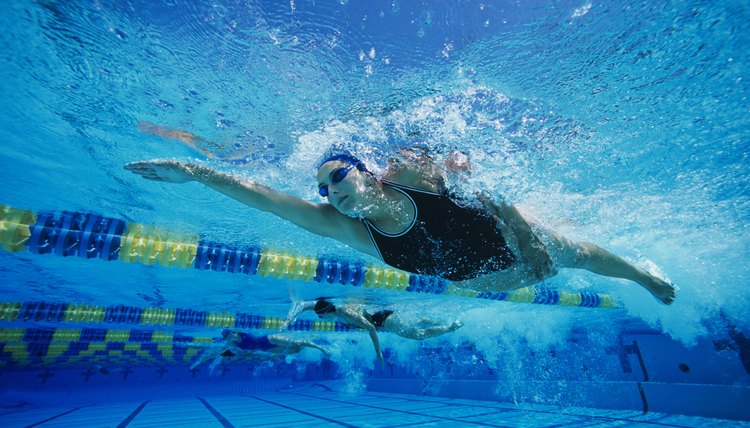What does fact checked mean?
At SportsRec, we strive to deliver objective content that is accurate and up-to-date. Our team periodically reviews articles in order to ensure content quality. The sources cited below consist of evidence from peer-reviewed journals, prominent medical organizations, academic associations, and government data.
- American Heart Association: Physical Activity
- MayoClinic.com; Exercise for Weight Loss: Calories Burned in 1 Hour; December 2009
The information contained on this site is for informational purposes only, and should not be used as a substitute for the advice of a professional health care provider. Please check with the appropriate physician regarding health questions and concerns. Although we strive to deliver accurate and up-to-date information, no guarantee to that effect is made.
What Kind of Exercise Is Swimming?

Although swimming is easy on the joints, it is not easy on your heart and lungs -- and it is possible to become injured due to overtraining. Swimming is an intense form of aerobic or cardio activity; it will not give you big muscles and it will not improve your balance or athletic performance, except as a swimmer. Understanding the demanding requirements of swimming, when it is done as exercise, will help you to perform better in the pool.
Vigorous Cardio
Cardio exercise gets you breathing hard and increases your heart rate. Regular cardio improves your fitness level and endurance so that you can exercise more and reduces the chances of you getting heart disease, stroke or cardiovascular diseases. Cardio can be categorized as light, moderate or vigorous. Swimming laps is vigorous cardio; your heart rate elevates higher than during moderate cardio, and your breathing becomes fast enough to prevent you from having a conversation.
No Impact
Swimming is a no-impact form of exercise; it does not put stress on your joints. Because of this unique quality, swimming is distinct from almost all other forms of exercise, which are generally classified as either low-impact or high-impact. Swimming is the only kind of exercise that strengthens injured joints and limbs for rehabilitation without aggravating the original injury.
Calories
Swimming is a high-intensity, high-calorie-burning exercise. Gentle types of exercise, such as walking, burn relatively few calories except when done intensively, such as speedwalking up hills. General lap swimming burns about 511 calories per hour if you weigh 160 lb., 637 calories at 200 lb. and 763 calories at 240 lb. Actual results depend on your fitness level and how fast you swim. Vigorous-intensity cardio exercise, performed 75 minutes per week, is important for general health. By swimming for up to 150 minutes per week, you can use this exercise to give added benefits to your overall health.
Warnings
Although swimming does not have the impact of other exercises, the intensity of swimming can be too much. Vigorous exercise is contraindicated for those with a heart condition or who have suffered a stroke. A person who is middle-aged or older and has not been exercising regularly might not do well with swimming. Other contraindications for vigorous-intensity exercise include recent chest pain, tendency to lose consciousness, breathlessness after mild exertion or pain in the middle or left side of your chest, neck, shoulder or arm. Obtain clearance from your doctor if you fit any contraindicated situations. If you wish to benefit from the buoyancy of pool exercise without a high-intensity level of swimming, try water aerobics, which is easy on your joints but is only a moderate form of cardio.
References
Writer Bio
Sarka-Jonae Miller has been a freelance writer and editor since 2003. She was a personal trainer for four years with certifications from AFAA and NASM. Miller also worked at 24 Hour Fitness, LA Fitness and as a mobile trainer. Her career in the fitness industry begin in 2000 as a martial arts, yoga and group exercise instructor. She graduated cum laude from Syracuse University.
